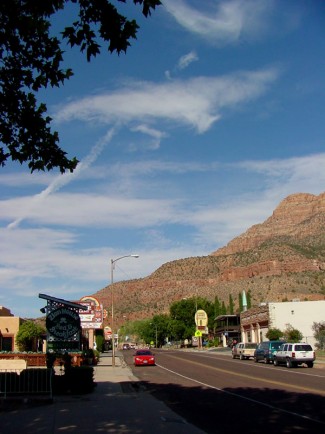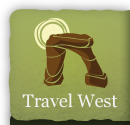Springdale History

As roads and automobiles improved, visitors began arriving around 1917 to stay at the Wylie Way Camp, one of the first tourist businesses in the Zion Canyon area. In 1909 the Mukuntuweap National Monument was established and later renamed Zion National Park in 1918. As the popularity of Zion increased, Springdale became a tourism oriented community. The completion of the Zion-Mt. Carmel Highway and Tunnel in 1930 further facilitated travel to the area, and now roughly three million visitors come annually though Springdale, Utah to visit Zion National Park.
Springdale is now a modern, safe, clean, and vibrant vacation destination community with hotels, motels, bed and breakfasts, fine dining, excellent gift shops and art galleries. Outfitters provide opportunities for horseback riding, mountain biking, canyoneering (rappelling and climbing in slot canyons), river tubing and many more enjoyable outdoor activities. The views of the park are excellent from anywhere in the town of Springdale. The town boast three excellent entertainment venues: The O.C. Tanner Amphitheater - site of many outdoor concerts, The Bumbleberry Theater - host to many theatrical styled musical presentations, and the Zion Canyon Giant Screen Theatre offering IMAX films on Zion National Park and other films of current interest.
Additional History:

The hearty group of early European settlers endured a rustic existence until the turn of the twentieth century when improved roads and the introduction of cars brought tourists to the area. However, the early settlers placed importance on education and they set up a school shortly after they arrived. The school taught the basic subjects of reading, spelling, writing, and arithmetic. Since the children were mainly focused on helping their families with farm duties, school attendance was typically infrequent as children in the same family took turns going to school. Originally, life was also rough as many of the houses were made of wood and covered in mud, many tools were handmade, and surrounding Indians continually threatened the settlers.
Until the late 1800s, Springdale was a satellite community of Rockville, a larger town nearby. Residents traveled to Rockville for shopping, services, and church. It was not until about 1885 when Springdale got its own school and church, and the first post office was built here in 1897.
Did you like this page? Did you find it helpful? Please consider sharing.
